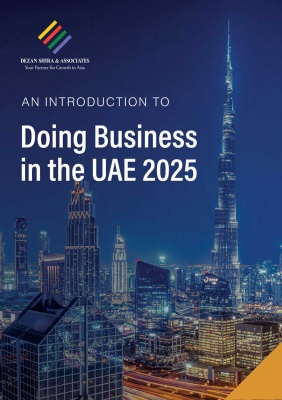Facilitating Trade and Connectivity between UAE and India: Updates Linked to the IMEEC
In a significant move aimed at enhancing trade efficiency and connectivity, India and the United Arab Emirates (UAE) are set to launch an online platform for streamlined port clearance processes.
This initiative is part of the broader India-Middle East-Europe Economic Corridor (IMEEC), designed to facilitate seamless movement of goods between the regions.
Further, India is building new port facilities that can be integrated within the IMEEC blueprint and the International North South Transportation Corridor (INSTC).
Streamlining port operations
The proposed online portal will revolutionize current procedures by digitizing the exchange of vessel and voyage-related documents. This digital platform, slated for launch in the second half of the 2024-25 fiscal year, aims to initially integrate ports like Jebel Ali in the UAE, and major Indian ports including Jawaharlal Nehru Port Trust, Kandla Port, and Mumbai Port.
According to senior government officials involved in the discussions, the portal will simplify compliance requirements, enhance operational efficiencies, and pave the way for future enhancements such as customs clearances, container tracking, and integrated logistics solutions. This holistic approach is expected to ease the movement of containers not just within ports but also across hinterlands, thereby fostering smoother trade flows.
Strategic and economic implications
The IMEEC initiative, conceptualized during the G20 Summit in New Delhi, underscores India’s strategic intent to strengthen economic ties with the Middle East and Europe. By leveraging this corridor, which includes sea and rail links, India aims to bypass traditional routes like the Suez Canal, potentially reducing shipping times and costs significantly.
Geopolitically, the IMEEC positions India as a key player in enhancing regional connectivity and economic integration. By aligning with allies such as the UAE, Saudi Arabia, and other European partners, India seeks to counterbalance initiatives like China’s Belt and Road Initiative (BRI) while asserting its economic influence in the region.
Prospects and scope for collaboration
Looking ahead, discussions are underway to extend the online platform to include additional regulatory interfaces and expand its reach to encompass more countries within the IMEEC framework like Saudi Arabia and Oman. This collaborative effort not only aims to boost trade confidence but also sets a precedent for digital infrastructure initiatives across global economic corridors.
Vadhavan Port in Maharashtra state: Bid to make it an integral part of the IMEEC Corridor
In a significant boost to India’s maritime infrastructure, the Indian government has approved the development of the Vadhavan Port in the western state of Maharashtra. India intends it to be one of the world’s top 10 ports upon completion. The INR 762-billion (US$9.13 billion) project is envisioned as an all-weather greenfield deep draft major port and will be connected to national highways and existing rail networks. Developed under a public-private partnership (PPP) model, it will feature:
- Nine container terminals, each extending 1000 meters, ensuring ample capacity for handling diverse cargo types.
- Four multipurpose berths, including a dedicated coastal berth, facilitating efficient transshipment operations.
- Four liquid cargo berths, a Ro-Ro (Roll-on/Roll-off) berth, and a dedicated coast guard berth, catering to a wide range of maritime needs.
Upon completion, the port is expected to handle up to 298 million metric tonnes (MMT) per annum, with a significant portion dedicated to handling approximately 23.2 TEUs (twenty-foot equivalent units) of container traffic. This substantial capacity will play a crucial role in supporting the IMEEC’s objective of facilitating trade flows between India, the Middle East, Europe, and beyond.
Strategically positioned along the Arabian Sea, Vadhavan Port will serve as a vital gateway for mega vessels traversing international shipping routes connecting the Far East, Europe, the Middle East, Africa, and the Americas. By integrating seamlessly with the IMEEC and INSTC corridors, the port promises to reduce transit times and costs, thereby enhancing India’s competitiveness in global trade.
G7 Summit: Support for IMEEC and other global trade corridors
During the 50th G7 Summit, held in Apulia, Italy, the Group of Seven industrialized nations pledged to advance infrastructure projects, including the IMEEC, as outlined in the summit’s concluding communique.
India’s Prime Minister Narendra Modi was invited to participate in the three-day summit, which concluded with the issuance of the communique on the evening of June 14. In the communique, the G7 reaffirmed their commitment to a free and open Indo-Pacific governed by the rule of law.
The communique detailed their intention to bolster concrete initiatives under the G7 Partnership for Global Infrastructure and Investment (PGII). This includes support for flagship projects and complementary efforts aimed at developing transformative economic corridors for high-quality infrastructure and investment.
Specifically mentioned were initiatives to enhance coordination and financing for corridors such as the Lobito Corridor, Luzon Corridor, Middle Corridor, and the aforementioned India-Middle East-Europe Economic Corridor. These efforts are set to build upon existing frameworks like the EU Global Gateway, the Great Green Wall Initiative, and Italy’s Mattei Plan for Africa.
About Us
Middle East Briefing is one of five regional publications under the Asia Briefing brand. It is supported by Dezan Shira & Associates, a pan-Asia, multi-disciplinary professional services firm that assists foreign investors throughout Asia, including through offices in Dubai (UAE), China, India, Vietnam, Singapore, Indonesia, Italy, Germany, and USA. We also have partner firms in Malaysia, Bangladesh, the Philippines, Thailand, and Australia.
For support with establishing a business in the Middle East, or for assistance in analyzing and entering markets elsewhere in Asia, please contact us at dubai@dezshira.com or visit us at www.dezshira.com. To subscribe for content products from the Middle East Briefing, please click here.


